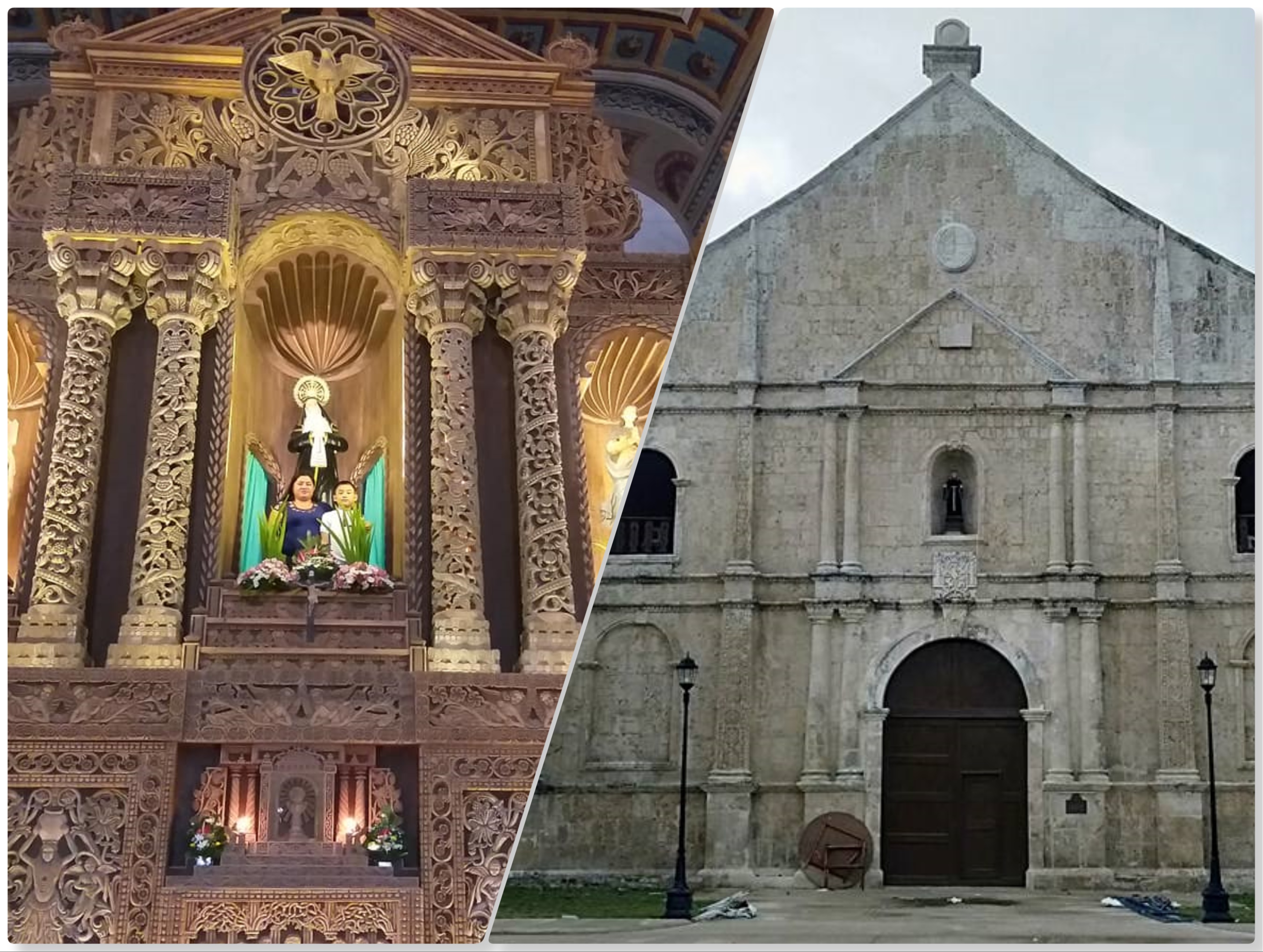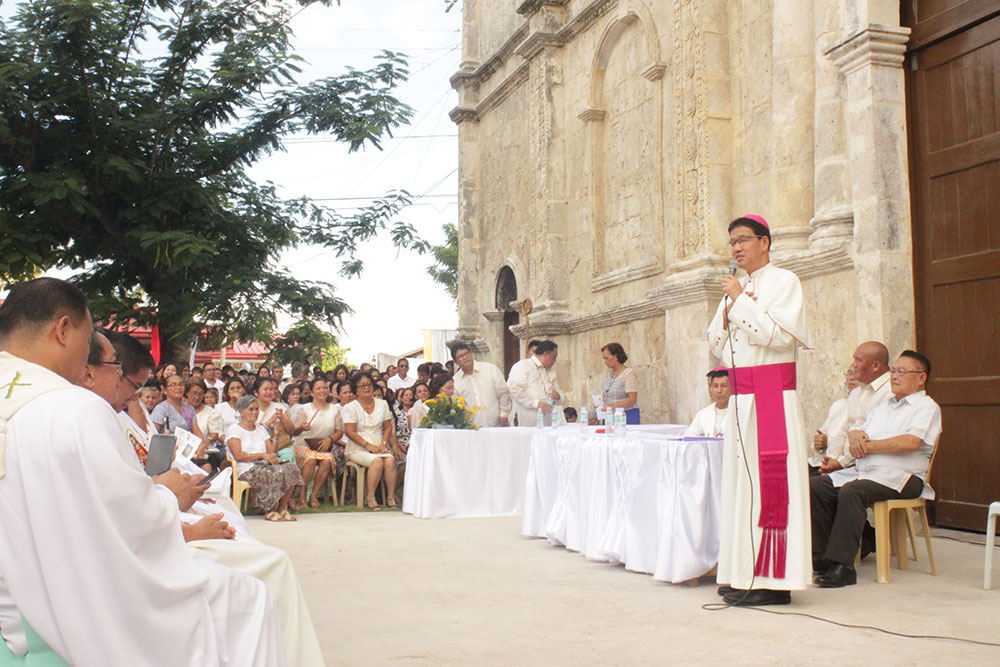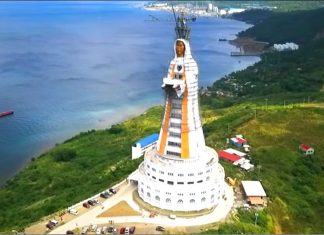
The National Museum (NM) restored the Spanish-time church buildings of Alburquerque and Dimiao which were damaged by the 2013 earthquake and returned them to the Diocese of Tagbilaran.
Tagbilaran Bishop Alberto Uy welcomed the return of the churches which were refurbished by the National museum nearly five years after it closed on October 15, 2013 following a 7.2 magnitude earthquake.
“While the 2013 earthquake which ruined the churches handed bad experiences of trauma, pain and fear, it also was good luck for Bohol for the restoration of the now very beautiful churches and heritage structures,” the bishop of Tagbilaran said.
NM, represented by Assistant Director Angel Bautista and Bohol Field Office personnel led by Engr Joel Dahiroc, handed the restored Santa Monica Church in Alburquerque, which has been restored closest to its original form, to the diocese.
The newly completed restored church of San Nicolas de Tolentino in Dimiao was reopened in solemn rites followed by a mass officiated by Bishop Uy, along with Bishop Emeritus Leonardo Medroso, and Rev. Fr. Jomari Polo.
According to Dimiao Church parish priest Fr. Polo, the Dimiao Church of San Nicolas de Tolentino was built in 1750, formally establishing a residence for the priests who used to come only for services to the place as a visita of Loay and Loboc churches.
The church, along with the nearby Ermita ruins, have been declared as a National Cultural Treasure (NCT) by the National Museum, that when the earthquake affected some of its fortified walls and threatened the church walls to crumble, the national government was obligated to fund its restoration and refurbishment, NM Director Bautista explained.
At the opening program held at the church’s puerta mayor, Director Bautista, Bishop Uy, Fr. Polo and Mayor Guivencan signed the acceptance documents and as witnesses to the historic moment.
The group also re-unveiled the NCT marker which the NM handed to the church last June 28, 2011, before formally entering the church and celebrating the commemorative mass.
In his message, Director Bautista, who first immersed himself in Dimiao in 1998 as the head of the newly formed archeology department of the NM, his work on the church documentation and the Ermita ruins, as well as the Spanish colonial bridges in town allowed him to know the local culture and the people.
His experience of an unfunded excavation came out big with the local government partly funding their documentation initiatives.
His team’s work led to the declaration of the church and the ermita ruins as NCT and the colonial stone arch bridges as important cultural property of the country.
Possibly the smallest Spanish Church in terms of floor space, from its façade, the church of Santo Tomas de Tolentino appears huge especially with the illusion built by the church’s position on the edge of an open space.
The church restoration by the NM also includes the soon to be finished old pipe organ, the wall attached pulpit complete with wrought iron balusters, the stations of the cross, and the repainted ceilings.
The National Museum has since restored and turned over other restored churches, watch towers, the old tribuna which was the Old Capitol, and now houses the satellite office of the NM in Bohol, and is set to do the restoration and rebuilding of the ruined churches in Loboc, Loon, Cortes, Maribojoc, an old municipio and convent in Panglao and the Rizal Park in Tagbilaran.












